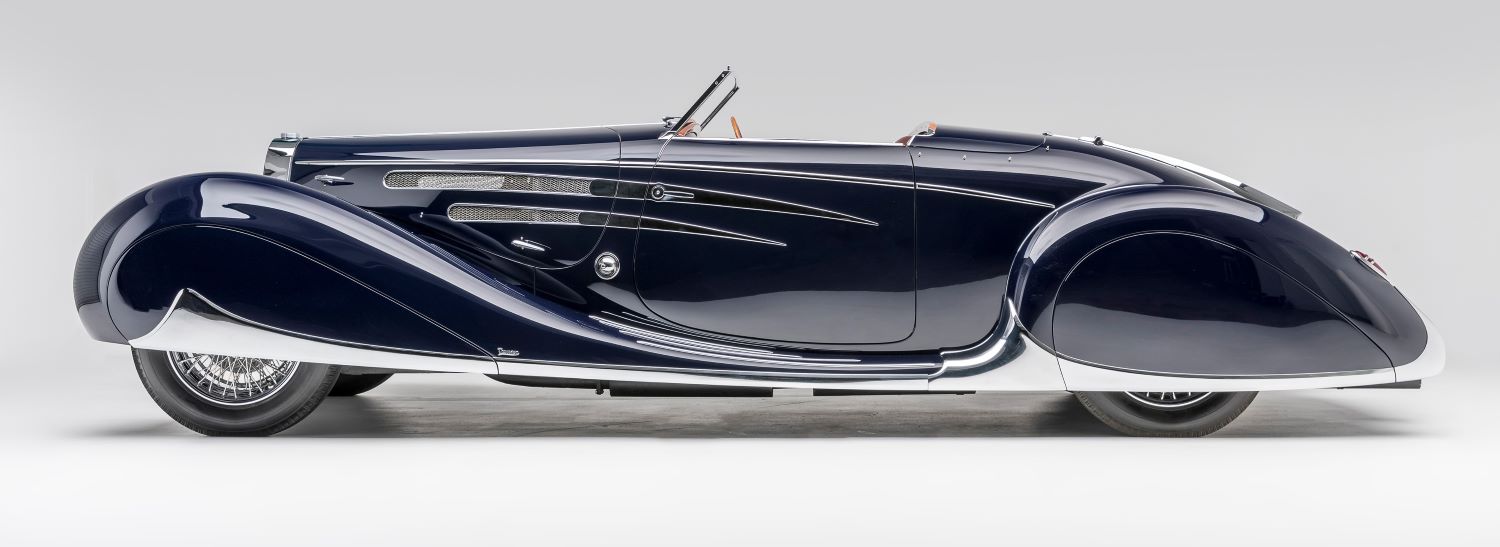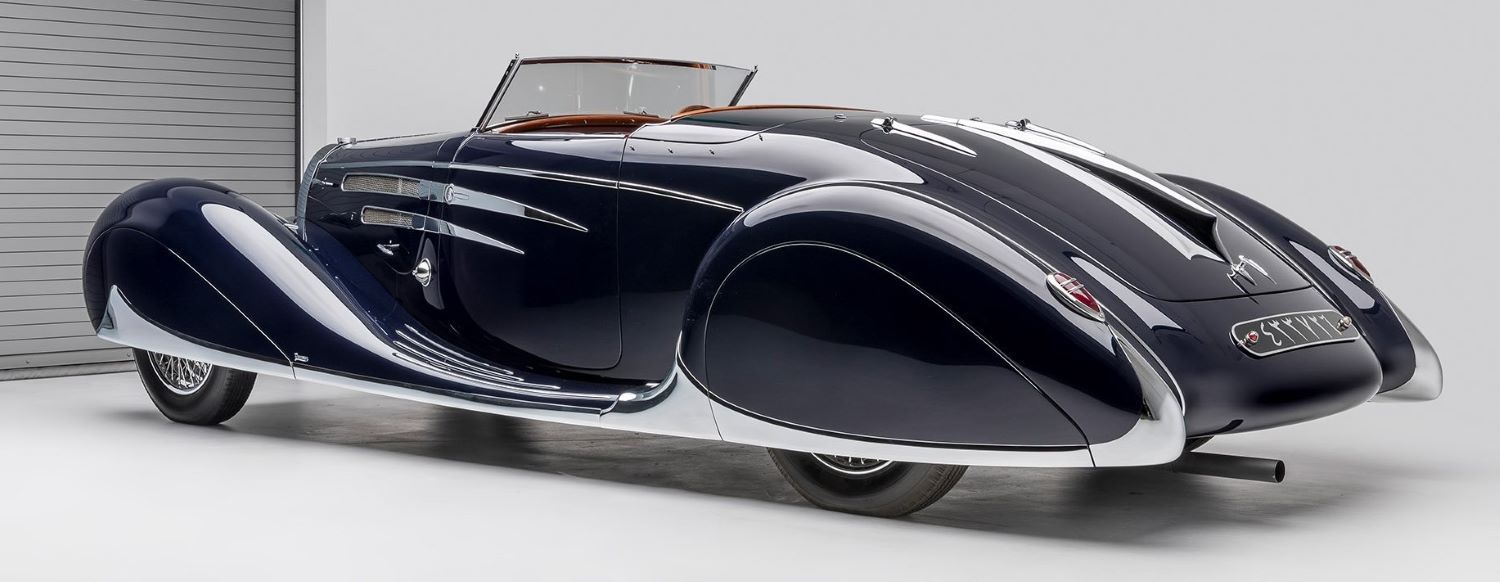

The 1939 Bugatti Type 57C “Shah” is a notable and historic automobile with a fascinating background. Here’s a detailed look at this remarkable car:
Historical Context
- Manufacturer: Bugatti
- Model: Type 57C
- Year: 1939
- Special Edition: Known as the “Shah of Persia” model.
Ownership and Origins
- Commissioned by: Mohammad Reza Pahlavi, the Crown Prince of Iran, who later became the Shah of Iran.
- Occasion: The car was commissioned as a wedding gift for his future wife, Princess Fawzia of Egypt.
Design and Specifications
- Engine: 3.3-liter, straight-eight engine with a supercharger.
- Power Output: Approximately 160 horsepower.
- Top Speed: 112 MPH
- Body Style: This particular model featured a custom-bodied cabriolet design by Vanvooren, a French coachbuilder.
- Chassis: Based on the Bugatti Type 57C chassis, which was known for its combination of luxury and performance.
Unique Features
- Exterior: The car had a striking, elegant design with streamlined, aerodynamic curves and a unique paint job that made it stand out.
- Interior: Luxurious interiors with high-quality materials and exquisite craftsmanship, befitting its royal owner.
- Performance: The supercharged engine provided enhanced performance, making it one of the more powerful and advanced vehicles of its time.
Historical Significance
- Rarity: The Bugatti Type 57C “Shah” is an exceptionally rare model, with only a few ever produced, and even fewer with the custom features and history of this particular car.
- Cultural Impact: The car symbolizes the opulence and grandeur associated with the royal families of Iran and Egypt during the early 20th century.
- Collectibility: Due to its unique provenance, design, and engineering excellence, it is highly prized by collectors and automotive historians.
The 1939 Bugatti Type 57C “Shah” remains an enduring symbol of luxury, craftsmanship, and historical significance in the automotive world.
Carrosserie Vanvooren was a French Coachbuilder based in the north-western Paris suburb of Courbevoie. The company concentrated on producing car bodies for luxury cars, being closely associated, during the 1930s, with the products of Hispano-Suiza, Bugatti, Rolls-Royce and Bentley.

Gift for the Prince of Persia
Heralded by many as one of the most beautiful and sculpturally dynamic Bugatti Type 57s of all, the 1939 Type 57C by Vanvooren in the collection of the Petersen Automotive Museum would have been bodied in a manner similar to that of most of the other 800 or so Type 57s built between 1934 and 1940 had it not been for good timing and fortunate circumstances. And while the coachwork almost certainly would have been as striking as any other design to grace a Type 57 chassis, it would lack the breathtaking beauty, the documented royal provenance, the unparalleled rarity, and the long-held secret of its existence that has made it as fascinating to learn about as it is enthralling to behold. First seen at the 1934 Paris Auto Salon, the Type 57 was powered by an advanced 3.3-liter, twin-cam, straight-eight engine, which made it a fast, comfortable touring car. Introduced in 1937 and offered through 1939, the 160-horsepower supercharged version was dubbed the Type 57C, the “C” standing for “compressor” the French word for “supercharger.” It was a suitable platform on which to mount coachwork destined for the world’s most demanding customers. And what Jean Bugatti could not conjure up, others could.
On March 16 that same year, Mohammad Reza Pahlavi, the Prince of Persia and future Shah of Iran, married Princess Fawzia of Egypt, King Farouk’s glamorous sister. In order to congratulate him in a way that would cement their countries’ political ties and remind the Persian leader of the exquisite nature of French design, the French government chose as a wedding gift a bespoke automobile. The decision makers must have reasoned that the Shah already had enough formal vehicles at his disposal and so they chose the most sporting car their country could make upon which to mount the most sublime coachwork their country could create. The chassis was to be a supercharged Bugatti Type 57C and the body was to have fully skirted fenders, a top that concealed beneath a metal panel when lowered, and a windshield that lowered into the cowl.
The Margie and Robert E. Petersen Collection
This Vehicle featured in ‘Splendor and Speed’ Exhibit
Petersen Museums
6060 Wilshire Blvd.
Los Angeles CA, 90036
2nd Floor
Bruce Meyer Family Gallery
May. 2023 – Oct. 6, 2024

You must be logged in to post a comment.